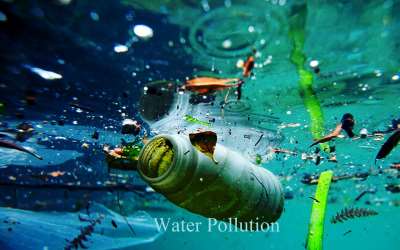Table of Contents
Introduction
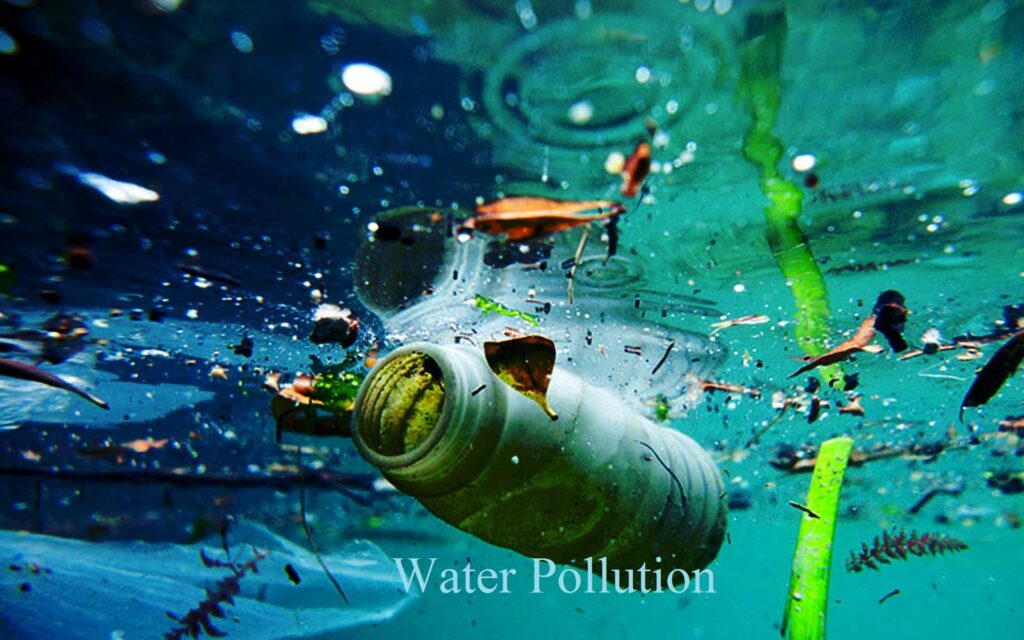
Water Pollution
- Water pollution is any impurities which comes from the surrounding area that gets water to polluted by mixed with water bodies.
- Human activities such as industrial and household waste are the big factor that’s causing water pollution.
- It is also polluted by the soil and other particles brought by the storm.
- Water pollution is a great bane for nature as well as humanity.
- It degrades the quality of the water in the water bodies.
- When humans, birds, and animals drink this polluted water, including aquatic animals, it dramatically affects their health.
- Chemicals, garbage, bacteria, and parasites are the best examples of pollutants that present in polluted water and make it unfit for use in drinking, cooking, cleaning, and other activities.
- As per the WHO report around 842000 deaths occur every year by drinking contaminated water.
- Today, most of the groundwater in the world is contaminated with arsenic, which is highly toxic.
- Also, the immersion of idols in rivers causes water pollution.
- That’s why water conservation should be our tool to combat water pollution.
- This is our primary responsibility to save fresh water from pollution because water is the main source of life, so that pure water is available to our future generations.
Definition of Water Pollution
- When the water sources get contaminated, it is called water pollution.
- This water is not fit for drinking.
Causes of Water Pollution
- There are six main causes of water pollution are as follows:-
1. The main causes of water pollution are industry, agriculture, and livestock farming.
2. Global warming also causes water pollution.
3. Dumping of waste materials and feces
4. Due to martime traffic
5. Deforestation
6. Fuel spillages
Effects of Water Pollution
- There are 9 effects of water pollution:-
1. It increases waterborne diseases like jaundice, gastroenteritis, and typhoid.
2. It decreases the presence of oxygen in water.
3. It is harmful for both plants and animals.
4. It increases the death of aquatic animals.
5. It affects the production of agriculture.
6. It increases the destruction of biodiversity.
7. It also makes people sick.
8. It damages coral reefs.
9. Lack of portable water
Tpes of Water Pollution
- There are 10 easy types of water pollution are as follow:-
1. Groundwater Pollution
2. Surface Water Pollution
3. Ocean Water Pollution
4. Point Source
5. Non- Point Source
6. Transboundary
7. Agricultural
8. Sewage and Waste Water
9. Oil Pollution
10. Radioactive Substances
1. Groundwater Pollution
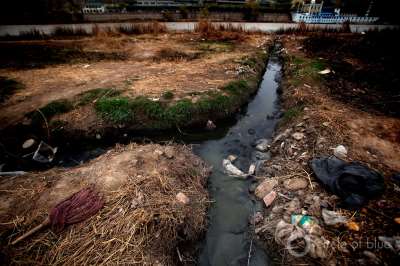
Image: Groundwater Pollution
- Groundwater pollution occurs when harmful substances such as slurry, fertilizers, animal waste, etc. seep into underground water sources.
- This water then becomes unsafe for human use, which is particularly problematic for people in rural areas who are dependent on groundwater for drinking water.
- Once an aquifer of groundwater has been polluted, it is almost impossible to reverse the damage.
- Groundwater pollution is harder to detect and control which may cause the problem to persist for long periods of time.
- we really want to prevent water pollution by adopting proper waste management policies.
- It will be impossible for one company, one country, or one person to complete this goal.
2. Surface Water Pollution
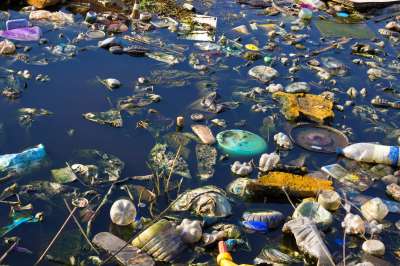
Image: Surface water pollution
- Surface water pollution is a type of pollution that is found in the oceans, lakes, rives, and other bodies of water.
- It occurs above the ground and caused by plastics, chemicals, pathogens, nutrients and industrial waste discharge into waterbodies.
- Surface water pollution can have major negative effects on the health of all the living beings that are present on the earth.
- It’s critical to understand the sources of surface water pollution as well as preventative and remediation measures.
3. Ocean Water Pollution

Image: Ocean water pollution
- Ocean water pollution is a mixture of both chemical contamination and trash.
- It is also known as marine pollution.
- There are many causes of ocean pollution, but most of them originate on land and are caused by humans.
- It decreases the levels of oxygen in the ocean, leading to the deaths of ocean animals like dolphins, penguins, whales, and sharks.
- Give stop using plastic and throwing trash into the water; these practices clog drains and pollute the environment.
4. Point Source
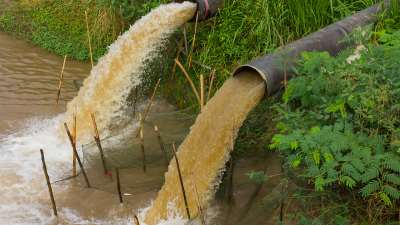
Image: Point Source
- A point source is a single identifiable source of pollution from which pollutants are discharged, such as a pipe or drain, noise, or light pollution.
- Factories and sewage treatment plants are the best examples of point sources of pollution.
- It may occur on or near roads.
- It includes municipal sewage treatment plant discharges and discharges from industrial plants.
- Its effect is low.
- Its treatment plant is less effective.
5. Non- Point Source

Image: Non- point Source
- Non- point source pollution comes from a range of different sources or pervasive environmental elements.
- It basically comes from fertilizer, road salt, pesticides, oil, pet waste, bacteria, herbicides, and any other contaminant that ends up on the ground naturally or from human activity.
- It is caused by rainfall or snowmelt moving over and through the ground.
- It is very hard to control because there is not one distinct source.
6. Transboundary
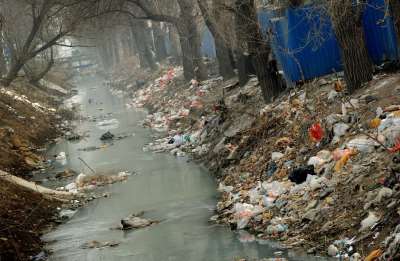
Image: Transboundary pollution
- Transboundary pollution is legal pollution that originates in one country but causes damage to another country’s environment.
- The path of transboundary pollution is water, oil spill, agricultural, municipal discharge or air.
- The problems occur due to transboundary factors like smog, smoke, haze, lakes, acid rain, and acidification of the soil.
- This pollution can be transported across hundreds and even thousands of kilometers.
- It should be controlled with the help of united nations conferences.
- The another method for combatting transboundary pollution is internation co-operation and brotherhood.
7. Agricultural Water Pollution
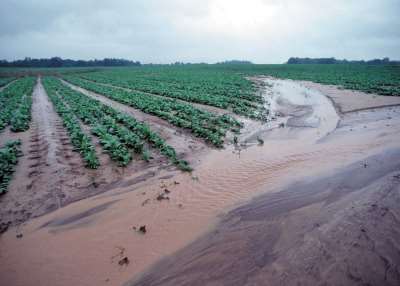
Image: Agricultural water pollution
- Agricultural water pollution is a source of pollution in farming that is caused by the burning of waste materials from agricultural activities for example land clearance, more uses of fertilizers, etc.
- Pollutants from agriculture greatly affect water quality and can be found in lakes, rivers, wetlands, estuaries, and groundwater.
- The different forms of agricultural pollution varies with individual situations, and negative impacts such as eutrophication.
- Its pollutants have direct effects on surrounding ecosystems, i.e., killing local wildlife or contaminating drinking water.
- Mitigation of agricultural pollution is a key component in the development of a sustainable food system.
- It can be controlled by using of enhanced-efficiency fertilizers, soil amendments, crop legume rotation and application of buffer zones.
8. Sewage and Waste Water

Image: Sewage and Waste Water
- The term sewage is used for wastewater that often contains feces, pee, and laundry waste.
- It means the discharge is untreated, and its nitrogen and phosphorus content can lead to pollution of lakes.
- Sewage is generated by human domestic activities.
- It contains toxic waste that causes water pollution and contaminates water with disease-causing microorganisms and poisonous substances.
- It affects the water with the growth of algae and, slowly, can lead to algal blooms.
- The treatment of sewage is to remove contaminants from the sewage to produce an effluent that is suitable for discharge into the surrounding environment.
9. Oil Pollution
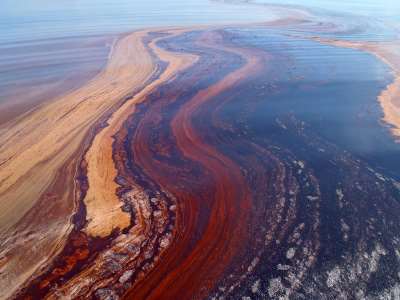
Image: Oil and water pollution
- Oil and water pollution occurs when the liquid of petroleum leaks into an ecosystem due to human causes.
- It commonly occurs in the form of oil spills.
- It means that a large amount of oil is released into marine and coastal waterways.
- It spreads over the surface of water in a thin layer that stops oxygen from getting to plants and animals that live in the water.
- To clean up spills, we will want to use spill kits, sorbent pads, and granular oil sorbents.
10. Radioactive Substances
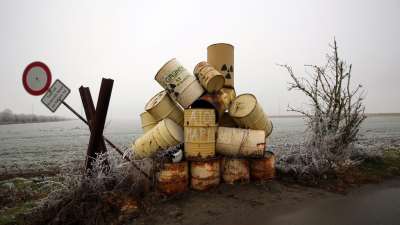
Image: Radioactive substances
- Radioactive substances occur naturally and are easily present in almost all rocks, and radium, in particular, dissolves more readily into groundwater in contact with sands or soils.
- Radium, uranium and thorium are the agents of radionuclides.
- Its pollution is known to distort these present cells, resulting in irreversible destruction of the various tissues and organs.
- If we drink water with radionuclides in it every day for many years, we have a higher risk of getting cancer.
- Its sources of pollution can be either man-made or natural.
Solution of Water Pollution
- There are 10 easy solution of water pollution; they are named as:
1. Waste Water Treatment
2. Reduce Plastic Waste
3. Water Conservation
4. Water-saving Toilets
5. Septic Tanks
6. Do not use toilets as garbage bins
7. Rainwater Management
8. Green Agriculture and Wetlands
9. Denitrification
10. Ozone Wastewater Treatment
1. Waste Water Treatment
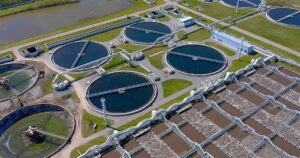
Image: Waste water treatment
- Waste water treatment is a highly effective solution because waste water treatment facilities are able to remove nearly all pollutants in waste water via a chemical, physical, or biological process.
- In this solution, water pollution is treated by treating some of the water before it’s reintroduced into the waterways.
- Regular equipment maintenance is necessary to guarantee the proper operation of wastewater treatment systems.
- This covers uses for things like water treatment sensors, which are essential for measuring and eliminating impurities in order to lessen water pollution.
2. Reduce Plastic Waste
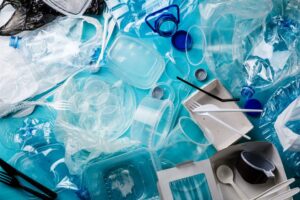
Image: Reducing plastic
- Reducing plastic is a big challenge for the world.
- Plastic serves to degrade the quality of the water.
- It’s believed that around 10 tons of plastic enter our oceans every year and that there are expected to be more plastic than fish by 2050, which is alarming!
- Plastic is used in a myriad of different items that people use every day, which include everything from clothes to various items around the home.
- That’s why it’s important to reduce plastic waste, and when we use plastic, make sure that you recycle.
3. Water Conservation
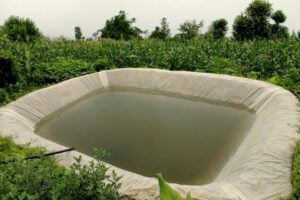
Image: Water conservation
- Water conservation is the technique of conserving water to reduce unnecessary water usage.
- It is important because fresh, clean water is a limited resource as well as a costly one.
- There are many ways that we can conserve water in our daily lives.
- When shaving or brushing our teeth, it’s recommended that you keep the water turned off.
- In this way, we will help reduce water pollution.
4. Water-saving Toilets

Image: Water-saving toilet
- Water-saving toilets are low-flush toilets that use significantly less water than traditional high-flow toilets.
- There is one easy trick for toilets that can save on water: place a half-gallon plastic jug filled with water and some pebbles or marbles inside the tank of the toilet.
- It’s help to reduces the amount of water that fills the tank by half a gallon.
- These steps are in the right direction to conserve water and reduce water pollution.
5. Septic Tanks

Image: Septic tanks
- Septic tanks are useful pieces of equipment that can treat sewage by effciently isolating the fluid from the solids.
- These tanks will use various biological processes that degrade solid substances before the liquids flow directly into a land drainage system.
- It will limit water pollution by successfully disposing of pollution that is already in the water.
6. Do not use toilets as a trash can
- Do not use toilets as trash cans; it means that they can cause obstructions in the sewer mains or siphons, which can result in a sewer backup, leading to unsafe conditions and costly cleanups.
- It is ideal to just wash tissue and human waste down the toilet.
7. Rainwater Management

Image: Rainwater management
- Rainwater management is a process to reduce runoff volume and improve water quality by replicating the natural hydrology and water balance of a site.
- Rainwater flows along sidewalks, streets, and lawns, and it picks up harmful bacteria, viruses, and other pollutants that are then pushed into storm drains, streams, and rivers.
- Rainwater can be treated and managed through a variety of different processes in which everything is included, like sand filtration, electrocoagulation, reverse osmosis, and advanced oxidation.
- It is important to manage rainwater and the pollution within it because this water will eventually reach rivers, streams, and oceans, which can worsen the pollution in these bodies of water.
8. Green Agriculture and Wetlands
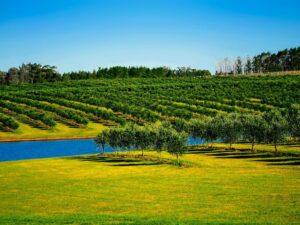
Image: Green agriculture
- Green agriculture involves the good management of natural resources through the use of pesticides and fertilizers that don’t contain harmful chemicals.
- This should involve planting trees and creating wetlands to create buffers that filter runoff and water pollutants.
9. Denitrification
- Denitrification is a simple ecological process that’s designed to convert nitrates directly into nitrogen gas.
- It should help prevent nitrate from being taken into the soil and contaminating the groundwater.
- If too much nitrate reaches groundwater, it speeds up the growth of algae and phytoplankton.
10. Ozone Wastewater Treatment
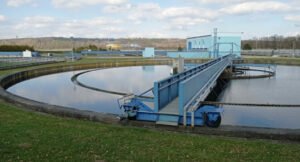
Image: Ozone wastewater treatment
- Ozone wastewater treatment is process in which ozone generator is used to break down water contaminants.
- In an ozone generator, ultraviolet radiation or exothermic fields are available that help convert oxygen into ozone.
- This process helps in the solution of water pollution from oxidizing bacteria, organic matter, and other water contaminants.
Conclusion of Water Pollution
- Here, we conclude that water pollution originates from many sources and causes because it not only has an impact on health but also can have negative effects on various industries and agriculture.
- While lakes, bays, ponds, slow-moving rivers, and the ocean are less resilient to the impacts of water pollution, rivers and streams show some resilience to some pollutants’ effects.
- That’s why it’s highly important to devise methods to reduce the level of water pollution that we are currently facing.
